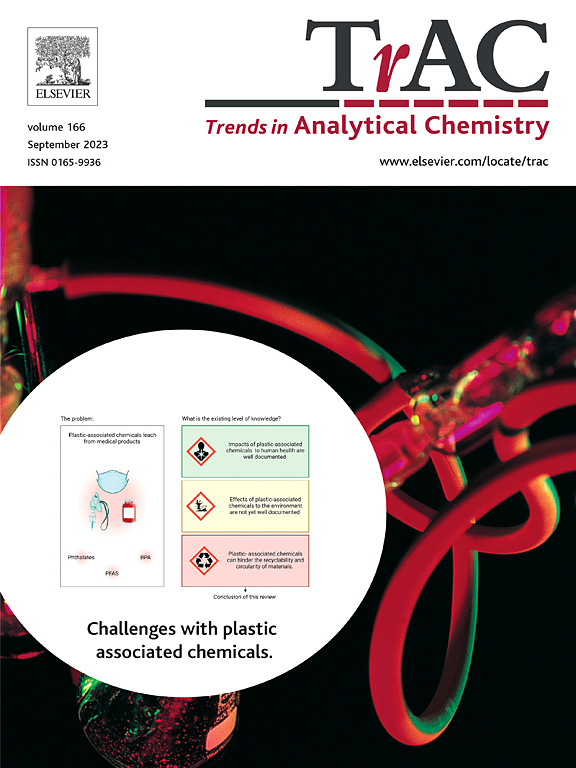Non-Destructive Spectral Systems (NDSS) for modern inspection systems in real-time: challenges and industrial perspectives
IF 12
1区 化学
Q1 CHEMISTRY, ANALYTICAL
引用次数: 0
Abstract
The demand for efficient, accurate, and non-invasive inspection methodologies has led to the emergence of Non-Destructive Spectral Systems (NDSS) as transformative tools. NDSS, in combination with chemometrics, enables rapid and precise analyses without damaging the sample, revolutionising traditional inspection approaches and offering accurate quantification and classification, process optimisation, and cost reduction capabilities. This review highlights the principles, advancements, and real-time applications of NDSS in product inspection and quality assurance. Recent technological innovations, data acquisition, computational algorithms, and their applications in the agri-food, pharmaceutical, and environmental monitoring sectors are explored. Furthermore, the challenges associated with their adoption for real-time implementations, including computational demands, calibration complexities, and environmental variability, are discussed. Case studies and emerging research directions provide a comprehensive outlook on the potential of NDSS to address evolving industrial needs. This review underscores the pivotal role of NDSS in enhancing operational efficiency, ensuring product quality, and driving future advancements in analytical instrumentation.
用于现代实时检测系统的无损光谱系统(NDSS):挑战和工业前景
对高效、准确和非侵入性检测方法的需求导致了无损光谱系统(NDSS)作为变革性工具的出现。NDSS与化学计量学相结合,可以在不损坏样品的情况下进行快速精确的分析,彻底改变传统的检测方法,并提供准确的量化和分类,流程优化和降低成本的能力。本文综述了NDSS的原理、进展及其在产品检测和质量保证中的实时应用。探讨了最新的技术创新、数据采集、计算算法及其在农业食品、制药和环境监测领域的应用。此外,还讨论了与采用实时实现相关的挑战,包括计算需求、校准复杂性和环境可变性。案例研究和新兴研究方向为NDSS解决不断变化的工业需求的潜力提供了全面的前景。这篇综述强调了NDSS在提高操作效率、确保产品质量和推动分析仪器未来发展方面的关键作用。
本文章由计算机程序翻译,如有差异,请以英文原文为准。
求助全文
约1分钟内获得全文
求助全文
来源期刊

Trends in Analytical Chemistry
化学-分析化学
CiteScore
20.00
自引率
4.60%
发文量
257
审稿时长
3.4 months
期刊介绍:
TrAC publishes succinct and critical overviews of recent advancements in analytical chemistry, designed to assist analytical chemists and other users of analytical techniques. These reviews offer excellent, up-to-date, and timely coverage of various topics within analytical chemistry. Encompassing areas such as analytical instrumentation, biomedical analysis, biomolecular analysis, biosensors, chemical analysis, chemometrics, clinical chemistry, drug discovery, environmental analysis and monitoring, food analysis, forensic science, laboratory automation, materials science, metabolomics, pesticide-residue analysis, pharmaceutical analysis, proteomics, surface science, and water analysis and monitoring, these critical reviews provide comprehensive insights for practitioners in the field.
 求助内容:
求助内容: 应助结果提醒方式:
应助结果提醒方式:


